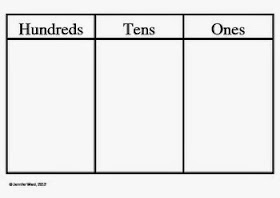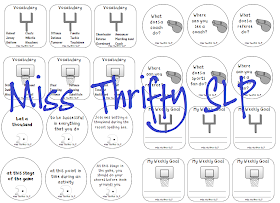Each and every school year, I find myself trying out a new way to teach my speech room expectations. I consider the success or failure of the new method for the rest of the school year. Everyone has their own style so I thought I would share my idea for this year in case it might help someone else with a more reserved/laid-back demeanor.
1) The Rules.
I follow the "K.I.S.S." (Keep it simple stupid) method to rules. I never liked listening to teachers talk on and on and on about their rules (nor when professors harped on the syllabus for this, that, and the other). I don't expect my students to listen to a five-ten minute lecture either. Every year I have the same basic expectations:
1. Be kind to others.
2. Try. Mistakes are just proof that we're learning.
3. Don't say the word game.
4. Clean up at the end.
I may have to add something about "copying" each other to the list. However, these four basic expectations usually cover a wide range of issues.
2) The Book.
Last year, our school leadership team gave everyone a copy of the "
Have you filled a bucket" book. I'm pretty sure this is an educator's best seller. I used it at the end of the year with a few new students and now they are all getting to listen to it again. (And, it's likely the second time of the year for most of them already.) Studies show that we retain information better after multiple repetitions. I used a
youtube video to make the story seem more like a movie.
I think this book does a wonderful job of teaching students about respect. I also like the vocabulary-- we talked quite a bit about what invisible means last week.
3) Review.
This week I am reviewing the concepts from the book. For my older students, we are filling out a bucket and a "dipper" with the different character traits. (Our third graders are learning all about character traits so the timing couldn't be more perfect.) My younger students are completing their bucket filling task with our favorite bear,
Teddy Talker!
 |
Another lesson I recently learned:
Teddy is a great model for tongue depressors when you have a student who is very wary of tactile cues. |
I made a quick packet of good and bad behavior cards to sort. My students have to teach Teddy what a good bear friend would do whenever they come across a bad bee card. If they get a honey drop card, they simply get to stick it in Teddy's bucket.
 |
I was lucky enough to find this honey bucket over the summer for .25 cents!
It makes the perfect "invisible" bucket for Teddy! |
I decided to make some extra non-Teddy cards in case my older friends need an extra review at some point. They can make up their own examples along with using the ones I created.
If you would like a copy of this activity,
click here.




















